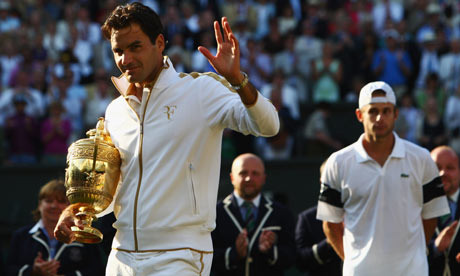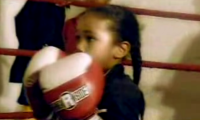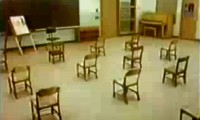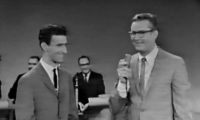 “Federer vs Roddick” (2009 Wimbledon Final)
“Federer vs Roddick” (2009 Wimbledon Final)
On July 5, 2009, the final game of the men’s singles at Wimbledon matched two professionals, Roger Federer and Andy Roddick. Play lasted 4 hours 18 minutes.
In the spring of 2009, for 2 hours and 37 minutes, David Joselit, the noted contemporary art historian and chair of Yale’s Art History Department was impersonated at “Our Literal Speed,” the conference and exhibition held at the University of Chicago and at the University of Illinois at Chicago. The political image as the artistic image was scripted into the impersonation of Joselit and involved the delivery of, and intervention into, a paper he had written on reenactments.
The premise was how the value of a work — in this case a work of art, or an artist’s oeuvre, gains ‘value’ through its repetition or reappearance as a reenactment. This is what political commentators refer to as the ‘media echo chamber’: “The term media echo chamber can refer to any situation in which information, ideas or beliefs are amplified or reinforced by transmission inside an ‘enclosed’ space.” Joselit became a media echo chamber. Ryeberg is a media echo chamber.
Even before the earliest days of televised politics and the latest US presidential election, sports capitalized on the necessity of the replay, repeat or reenactment. This nomenclature did not exist, but the process and the application did — predicting the economic value of the media echo chamber.
“Rafael Nadal: Dass Ist So Gut” (2009)
The replay involves subjectivity and selection. Highlighting underscores the invisible, the unexpected, the Herculean; the utterly remarkable and seemingly impossible human physical feats of professionalism. It reveals accuracy and allows for commentary on how things were actually done or actually should be done.
mytennis4you, Jason Goodall‘s Forehand Analysis” (2008)
Recently, the replay is used in the final judgement, to show what actually happened—truth, veracity, recall—in order to decide on a call. Ultimately, it all boils down to human error—on the part of the referees as well as the players. It is not only about competition, judgment, about not being wrong, but about being right, which is not about sportsmanship, but about winning.
If the linesman and referees were actually electronic sensors it would eliminate the need for a judgement of perception and our anticipation and the necessity of a personality acting out. It would take all of the sport out of sport. This is why we are also seeing the political arena become a media echo chamber. Behavior, valued as good or bad, only exists in relation to the third person — the one it is perpetrated against or witnessed by.
Professionalism, particularly in athletics, is about repetition. It is about practice, doing the same thing over and over again for years until it appears to us as the spectators or non-professionals that the professional player or performer no longer engages in cognition while in play (see 0.22 in the clip below).
This is why Federer is such an extraordinary player. It is not only his consistency, but the sheer power, elegance and style he exhibits both on and off the court. The physical supersedes the mental.
TennisHQ, “Roger Federer: The Beauty of the Game” (2017)
Pierre Bourdieu, in “Sport and Social Class,” discusses non-professionalism and what the state of amateurism or non-specialization provides for us as spectators. It is a perspective that can lead to questions that a professional or specialist would not think of: We can also think of being a good sport and the protocol of professionalism and civility. As amateurs we too can be professionals.
I am writing about an order, wherein language architects a space for incivility. But it begins with a simple phrase of politeness that permits its opposite.
In 1981 at Wimbledon, the first round of the men’s singles tournament matched two professionals, John McEnroe and Tim Gullikson. The final score was 7-5, 7-6, 6-3. At a certain point in the game, McEnroe established his own media echo chamber:
John McEnroe v Tim Gullikson, “You Cannot Be Serious” (Wimbledon, 1981)
McEnroe self-consciously exposes his own self-awareness of his mercurial personality, exhibiting a professionalism about not only controlling the ball in play on the court, but also his play and interference with the media, the referees, the audience and his opponents.
Civility does create a space for mistakes.
Excuse me.
– Mary Ellen Carroll





